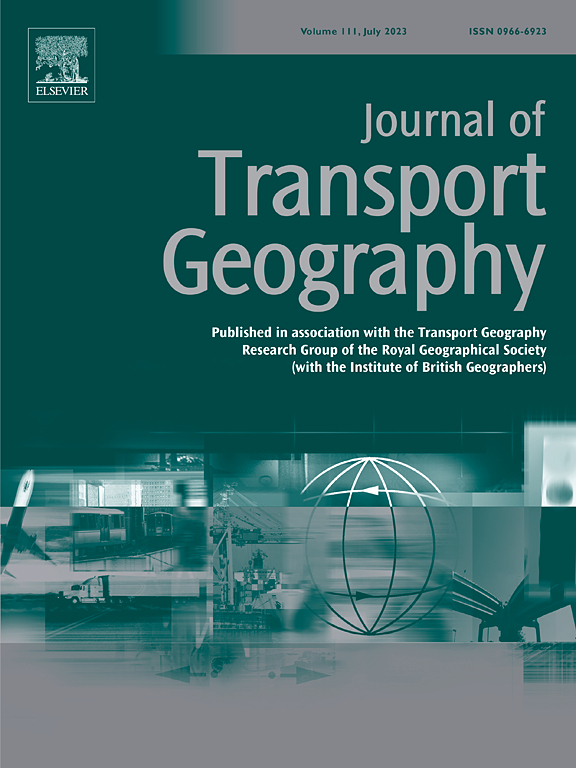网约车服务不连续性分析:与建筑环境和公共交通的联系
IF 5.7
2区 工程技术
Q1 ECONOMICS
引用次数: 0
摘要
网约车市场的饱和加剧了司机之间的拼车竞争,导致他们的满意度持续下降。了解建筑环境变量对司机获得服务的影响已经变得至关重要。本研究定义了网约车服务不连续性(RSD),通过加权司机两次连续乘车之间的换乘时间和距离来量化司机在获得服务时面临的困难。本文通过结合基于层次密度的空间聚类(HDBSCAN)聚类、条件表生成对抗网络(CTGAN)数据增强、光梯度增强机(LightGBM)结合SHapley加性解释(SHAP)可解释的机器学习技术以及叠加集成预测技术,探讨了杭州市建筑环境变量对RSD的影响。结果表明:建筑环境变量对RSD的影响表现出区域变异性和非线性效应。非线性效应表现为两种形式:不同阈值的相似非线性模式和非线性形式的变化。阈值效应在建筑环境变量中被广泛观察到,一些变量(如坡度)在特定阈值范围内对RSD表现出一致的边际贡献。此外,叠加集成预测更善于捕捉变量与RSD之间的内在关系,显示出更高的预测精度。特别是当基本模型的性能一般时,集合预测的效果较好。本研究提供了一种新的方法,从司机的角度来理解建筑环境对网约车的影响。本文章由计算机程序翻译,如有差异,请以英文原文为准。

Analysis of ride-hailing service discontinuity: Links to built environment and public transportation
The saturation of the ride-hailing market has intensified competition among drivers for ride requests, leading to a continuous decline in their satisfaction. Understanding the impact of built environment variables on drivers' access to services has become crucial. This study defines Ride-hailing Service Discontinuity (RSD) by weighting the transfer time and distance between two consecutive rides of drivers to quantify the difficulty drivers face in accessing services. This paper explores the effects of built environment variables on RSD in Hangzhou by integrating Hierarchical Density-Based Spatial Clustering of Applications with Noise (HDBSCAN) clustering, Conditional Tabular Generative Adversarial Network (CTGAN) data augmentation, Light Gradient Boosting Machine (LightGBM) combined with SHapley Additive exPlanations (SHAP) explainable machine learning technique, and Stacking Ensemble Prediction. The results indicate that the impact of built environment variables on RSD exhibits regional variability and nonlinear effects. The nonlinear effects are manifested in two forms: similar nonlinear patterns with different thresholds and changes in nonlinear form. Threshold effects are widely observed in built environment variables, and some variables (e.g., Slope) exhibit consistent marginal contribution to RSD within a specific threshold range. In addition, the Stacking Ensemble Prediction is better at capturing the inherent relationships between variables and RSD, demonstrating higher prediction accuracy. In particular, when the performance of base models is moderate, the ensemble prediction performs better. This study provides a novel approach to understanding the impact of the built environment on ride-hailing from the driver's perspective.
求助全文
通过发布文献求助,成功后即可免费获取论文全文。
去求助
来源期刊

Journal of Transport Geography
Multiple-
CiteScore
11.50
自引率
11.50%
发文量
197
期刊介绍:
A major resurgence has occurred in transport geography in the wake of political and policy changes, huge transport infrastructure projects and responses to urban traffic congestion. The Journal of Transport Geography provides a central focus for developments in this rapidly expanding sub-discipline.
 求助内容:
求助内容: 应助结果提醒方式:
应助结果提醒方式:


